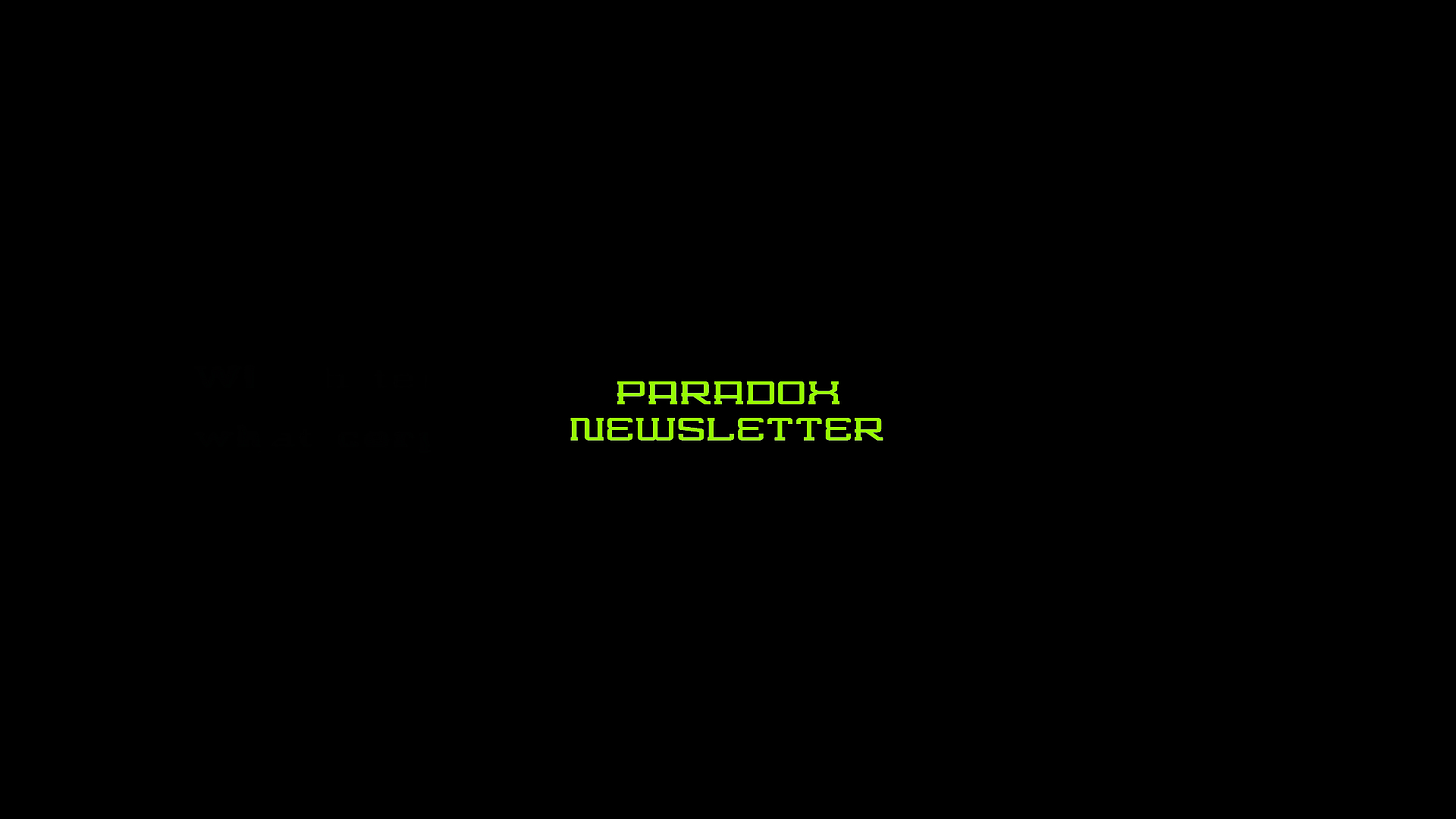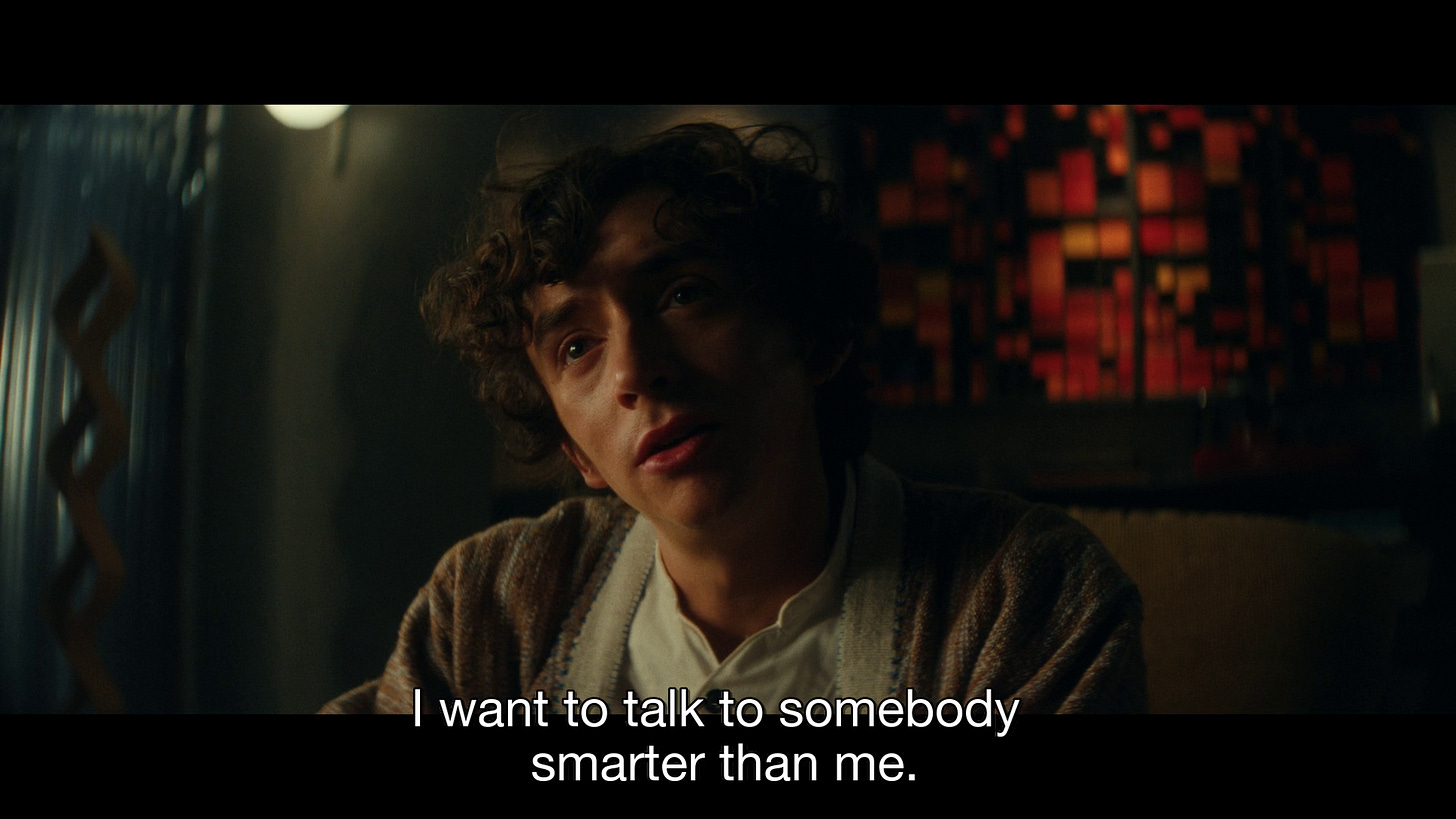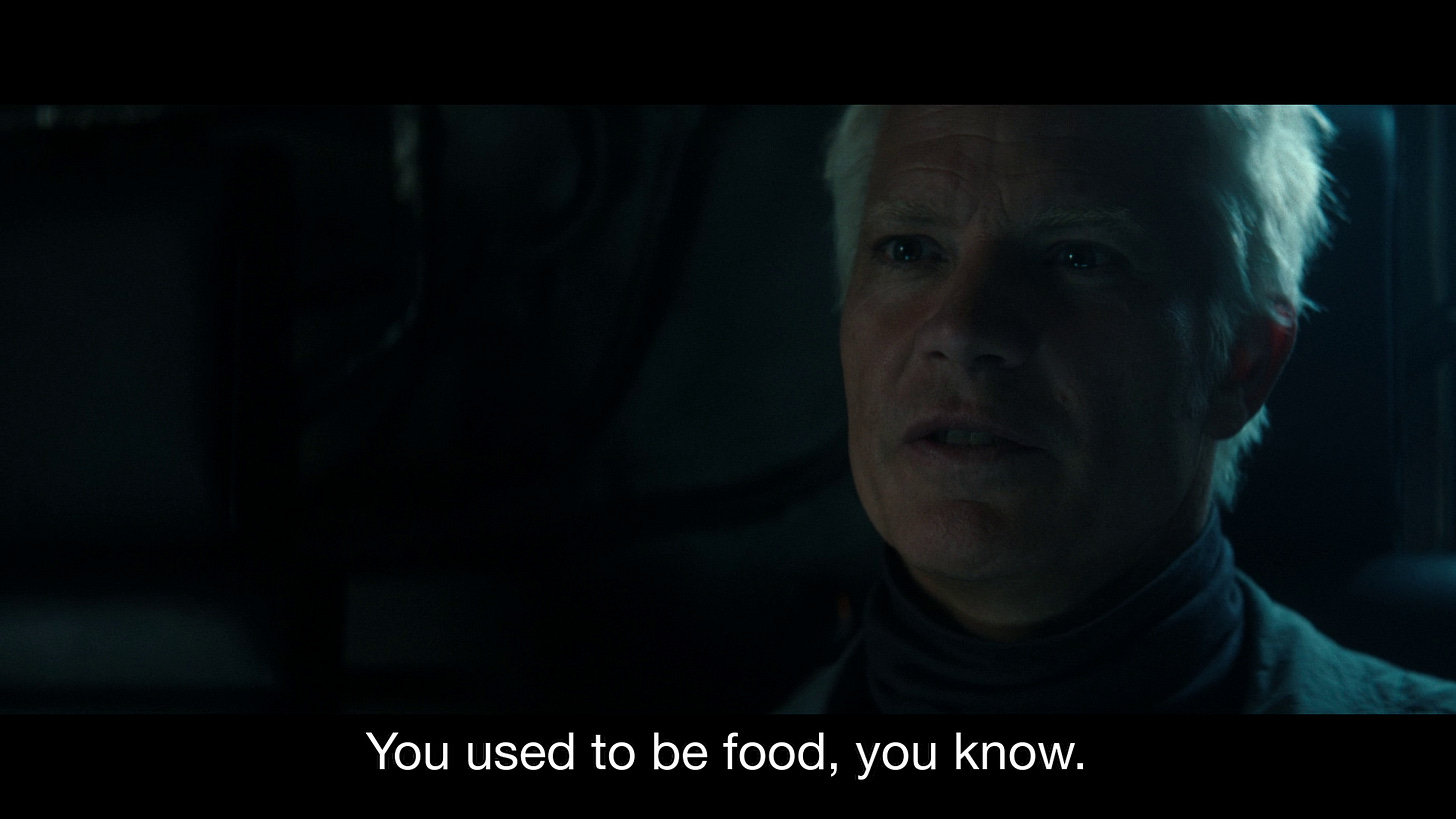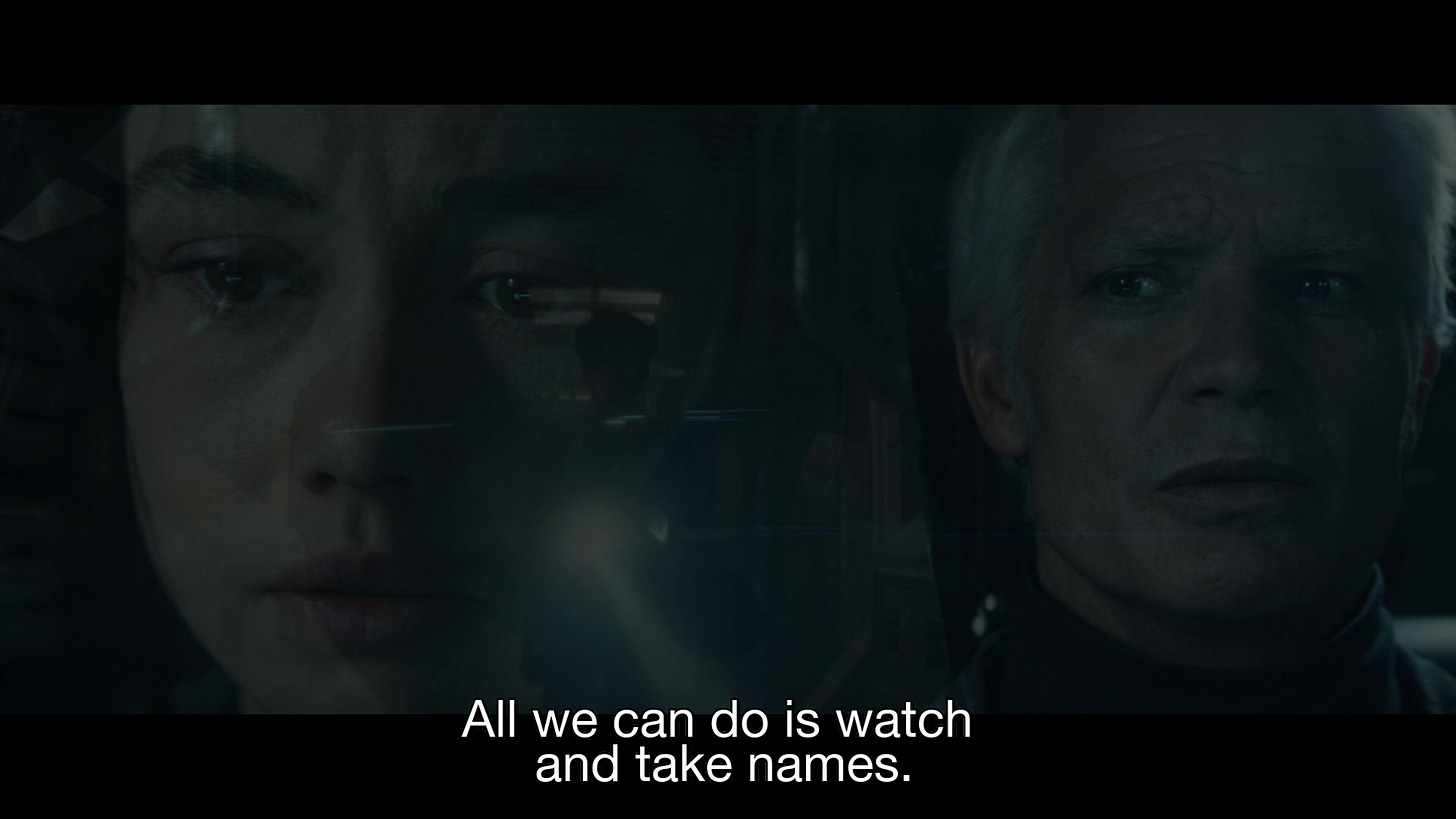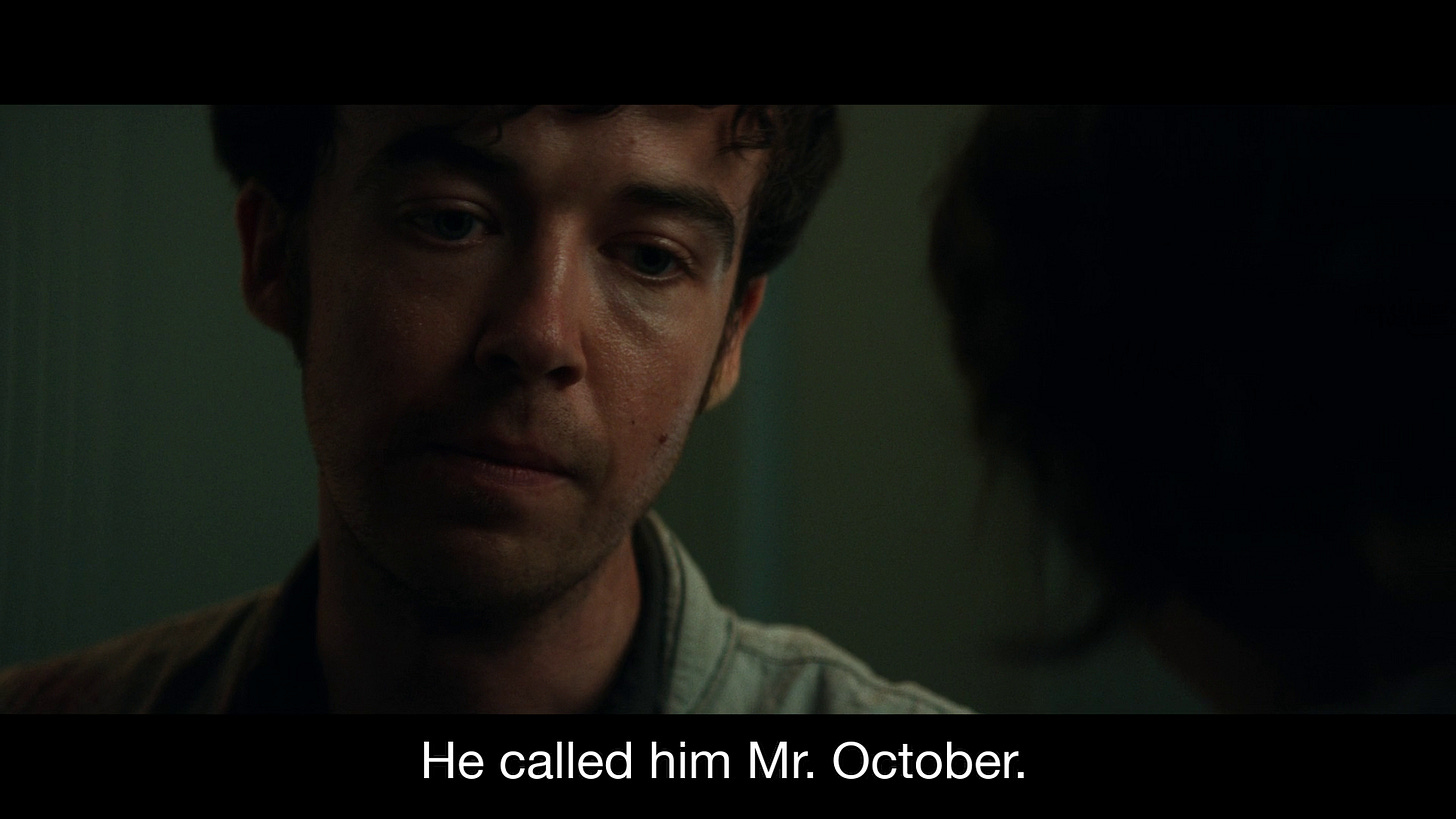Issue #393: Timothy Olyphant Dreams of Human Decomposition
Highest 2 Lowest (2025) is certain to be one of the most controversial and polarizing films of the year. I hope to write about it at length, but I would like to take the extra time and effort to put it in context with Spike Lee scholarship. It is worth seeing, and especially important to be watched alongside that from which it is adapted, Akira Kurosawa’s High and Low (1963). In a non-trivial way, Lee’s adaptation turns High and Low into a sports film. It dramatizes the confrontation between a long-suffering sports fanbase and an ascendant one, taking the places of Ginjirō Takeuchi (Tsutomu Yamazaki) and Gondo (Toshirō Mifune). It is an especially potent watch, I think, for Boston sports fans.
Along with my unconventional reading of Highest 2 Lowest as sports cinema in the tradition of He Got Game (1998), there is also a lot to learn about the challenges and rewards of adapting a film from 1963 to 2025. There are elements from High and Low, substantively unchanged in Lee’s version, that come across as more resonant in the modern retelling.
If Highest 2 Lowest has an undeniable flaw, it’s the failure to live up to its name. It stops far short of the lowest. Kurosawa’s film is more grimy, mean spirited, obscene, and confronts a world of absolutely incoherent chaos undergirded by an arbitrary antagonism. Highest 2 Lowest orders the world and floats above it. But its wonders are in the spirit of Lee the formalist, the Inside Man (2006) filmmaker, with Denzel still leagues away from his closest competition — even if he falls short of his greatest greatness.
We have a great cadre of newsletter readers available to you as interlocutors in the Paradox Newsletter Discord. If you want to talk about Highest 2 Lowest in real time, a link to the Discord goes out with every paid subscription.
“Fear’s for animals”: Humanity and the Evolutionary Test of the Grim Reaper
I like Noah Hawley. Last week, I obliquely alluded to my writing about his first season of Fargo (2014), one of the best seasons of TV ever. Now, he is back, doing what he has done best: adapting a movie into a TV show. This time, it is a little different. Alien: Earth (2025) is presented as an entry into the now expansive canon of Alien beginning with the 1979 film, including Ridley Scott’s mid- and late-2010s attempts to “elevate” Alien into a contemplative sci-fi epic, and the remake-disguised-as-sequel Alien: Romulus (2024), an effort at 1979 revivalism that can no longer be called a “return to Scott.”
Alien: Earth might be the real return to Scott, as in synthesizing what is good about Alien, Prometheus (2012), and Alien: Covenant (2017). Yes, Hawley is not shy about his presentation of the xenomorph and it looks pretty cool even with the constraints of television budget. For Scott, though, androids, termed synthetics from Aliens (1986) onward, are a bigger part of his films than the various gruesome alien species and their complex lifecycles. In Alien, Ash (Ian Holm) works for the Weyland-Yutani corporation and seeks to preserve the alien life form as a specimen without consideration for the life of the crew. Prometheus and Covenant stage a decade of growth and conflict between David 8 and Walter One, both played by Michael Fassbender. David, “too human” according to Walter, is ultimately the same kind of deceptive villain as Ash with a more extreme goal. He sets out not simply to preserve the alien species, but propagate them.
Hawley returns to the nexus of themes involving the synthetic with Earth. The opening text narration of the first episode, “Neverland,” makes this clear:
In the future, the race for immortality will come in 3 guises:
Cybernetically enhanced human beings: Cyborgs
Artificially intelligent beings: Synthsand
Synthetic beings downloaded with human consciousness: HybridsWhich technology prevails will determine what corporation rules the universe
Aside from setting up the premise and themes for Alien: Earth, the diction of this opening text reveals a lot. The use of “guise” to describe the forms or methods of the “race for immortality” evokes the deceptive nature of the synth through the history of Scott’s Alien films. The final line, addressing “what corporation rules the universe,” sets up Earth’s neo-feudalism as well as sets aside the philosophical questions inherent to considering what form, cyborg, synth, or hybrid, if any, would actually result in “immortality.” Instead, it is simply a question of proprietary technology.
Scott has traced a different sort of question for immortality in his films, too. Prometheus culminates with an Icarus moment for Peter Weyland (Guy Pearce), hoping to extend his life with alien biologics and further cement an indelible mark on human history. But, as in Shelley’s “Ozymandias,” nothing lasts. Not even the synthetic life Alien: Earth character Kirsh (Timothy Olyphant) sets himself apart from.
Kirsh is, by far, the character who has engaged my thought most in Hawley’s take on the franchise. Putting aside Olyphant’s exquisite performance, Kirsh has routinely great lines in the show’s first episode, “Neverland.” He muses on human mortality to the show’s protagonist, the newly hybrid-ized Wendy (Sydney Chandler):
You used to be food, you know … Humanity. Your lives were short and filled with fear. Then your brains grew. You built tools and used them to conquer nature. You built impossible machines and went to space. You stopped being food. Or, I should say, you told yourself you weren’t food anymore. But in the animal kingdom, there is always someone bigger, or smaller, who would eat you alive if they had the chance. That’s what it is to be an animal. You’re born, you live, you die.
At first, Kirsh seems to be welcoming Wendy to her new life in a synthetic body, one which will not be eaten by the conventional predators of humans. However, he goes on to speak to her as if she is still a member of humanity — despite the fact that a metallic body (though probably not his metallic body) is vulnerable to the “eating” of metal by oxygen that forms rust.
Even as he does the work to remind a human of their fragile position in the ecosystem, he is far too sanguine about the potential of synthetic and hybrid life forms. He tells Wendy, this time speaking to her as a peer, “[Humans] all [die]. Generation after generation. All we can do is watch and take names.” The task of “tak[ing] names” is not limited to synthetic and hybrid lifeforms, but greater culture too. Weyland’s name is taken down in the history books even as he fails to extend his moral life. The company bearing his name might “rule the universe,” depending on how the “race for immortality” breaks. But the alien species, xenomorph and otherwise, that threaten Alien: Earth’s characters represent the absolute annihilation of civilization. They consume to a degree that nothing remains, even the names taken down by culture and logged in the computerized brains of synths and hybrids who won’t be stopped by time, but might be stopped by force.
“Neverland” establishes that the action will be the ostensibly human locked in combat against the eldritch, unfamiliar, and horrific from space. But the substance will be a new phase of humanity, one that translates a human brain to a computerized simulacra, set against the poles of synth and human to define itself. The notion of this translation might recall, most immediately, the cloning of Mickey 17 (2025). If the brain is simply copied, one wonders what happens to the original bodies of Wendy and the other hybrid children.
The second episode, “Mr. October,” does a little less philosophical heavy lifting. The absurdly named Boy Kavalier (Samuel Blenkin) suggests his motivation for creating the hybrids is not money, but the possibility of having “an interesting fucking conversation.” And Wendy meets her brother, Joseph Hermit (Alex Lawther), still attached to his mortal coil. Hermit shares the anecdote of “Mr. October,” a nickname for baseball player Reggie Jackson. For him, Mr. October is anyone who rises to the occasion when “the world gives you a moment to shine.”
There seems to be something missed in this account, though, that puts human achievement at the mercy of opportunity. It is not simply that Jackson, or other clutch players (like Kai “doesn’t lose on Sunday” Budde), seize an opportunity that is presented to them. They are great in the moments when it is most important for them to be great. They excel in the moments of highest leverage, where their actions will be disproportionately determinative of a result.
These moments are also the ones where it is hardest to succeed, far from an opportunity given. Instead, they present the greatest disincentives, the most daunting challenges. In the context of Alien: Earth, one might read this as the confrontation between human and alien that presents the greatest challenge to human evolutionary superiority. To be able to maintain control of the Earth, humans must be proverbial Mr. Octobers in their encountering creatures with unlimited destructive potential.
Alien: Earth showcases another kind of human superiority, too: cultural hegemony. In a first for the Alien series, there are multiple pop cultural references from the aforementioned MLB baseball to Ice Age: Continental Drift (2012). The animated Ice Age films, too, comedically render an encounter with a potentially apocalyptic test for the survivability of a species.
I am not sure Alien: Earth reaches the level of Hawley’s other television productions. But it has the production design to make it look like Alien, and Hawley has the eye to make it look better than your average TV show. For the next six weeks, I’ll be seated.
Weekly Reading List
I went to the beach this weekend and read the second in Ayatsuji’s “Bizarre House Mysteries,” The Mill House Murders (1988). It falls far short of The Decagon House Murders (1987) but is still a fun read. Kiyoshi Shimada is one of my favorite honkaku detectives. Despite its shortcomings, I found a lot of points of interest in Mill House aside from Shimada. Ayatsuji borrows a plot point from Seishi Yokomizo’s The Inugami Curse (1951), involving a molded plastic face mask.
Ayatsuji also brings back the mysterious architect Seiji Nakamura. Nakamura is an important character in The Decagon House Murders. He builds the titular house in both novels, but his idiosyncrasy and personal history are an important part of the Decagon House plot. Imagine you’re Ayatsuji sitting down to write a sequel to Decagon House, where you want your mystery to take place in yet another absurdly constructed and bizarre home. You save yourself a lot of trouble, and shore up your plot logic, by attributing the new house to Seiji Nakamura.
As a reader, I would have no issue suspending my disbelief regarding another unusual architect building another unusual home for whatever reason to stage a mystery for Shimada. However, these are texts concerned with their plot logic. The coherence of Ayatsuji’s artistic mode is contingent on a plot making sense.
Mill House makes sense, perhaps too much. But I remain a committed reader of Ayatsuji.
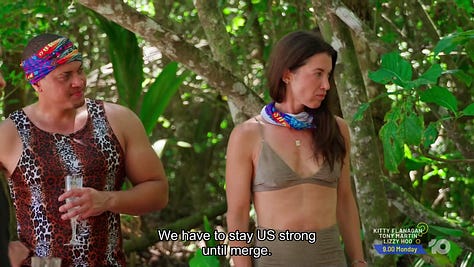


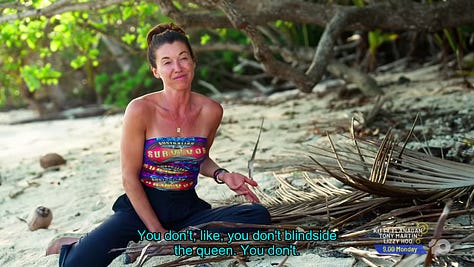
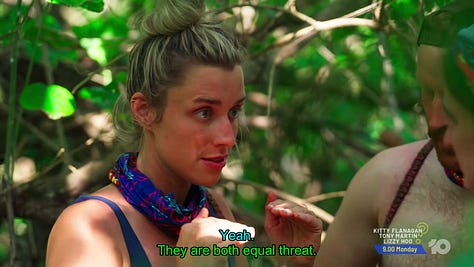
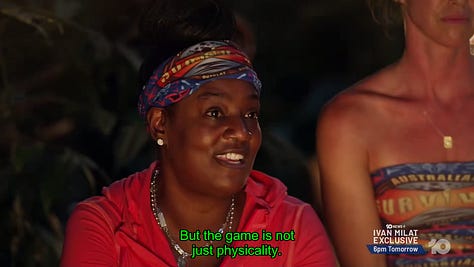
Season 13 (or 11, depending on who you ask) of Australian Survivor (2002) premiered this week. The subtitle? Australia V The World. It brings three all-time US Survivor players, Parvati Shallow, Cirie Fields, and Tony Vlachos to play in Australia against AU Survivor’s best. There are some other international players too, seemingly included to avoid the ire of CBS for stealing thunder from the upcoming Survivor season fifty.
It is exceeding my expectations. Above are some of my favorite moments, presented without context.
I don’t recommend watching this one without having seen the film first. Highest 2 Lowest, in my view, indicates profound reverance for the source material and original performances. This quick interview gives some texture to that idea.
Just for fun.
Event Calendar: Highest 2 Lowest, at a theater far from you
I added Highest 2 Lowest (2025) to the event calendar this week. It’s out now, but showing at embarrassingly few theaters. Try to find it if you can. Otherwise, it should be streaming at the beginning of September.
No updates to the calendar otherwise, but plenty to see at your local theater, especially if you are in the Boston area.
Until next time.


